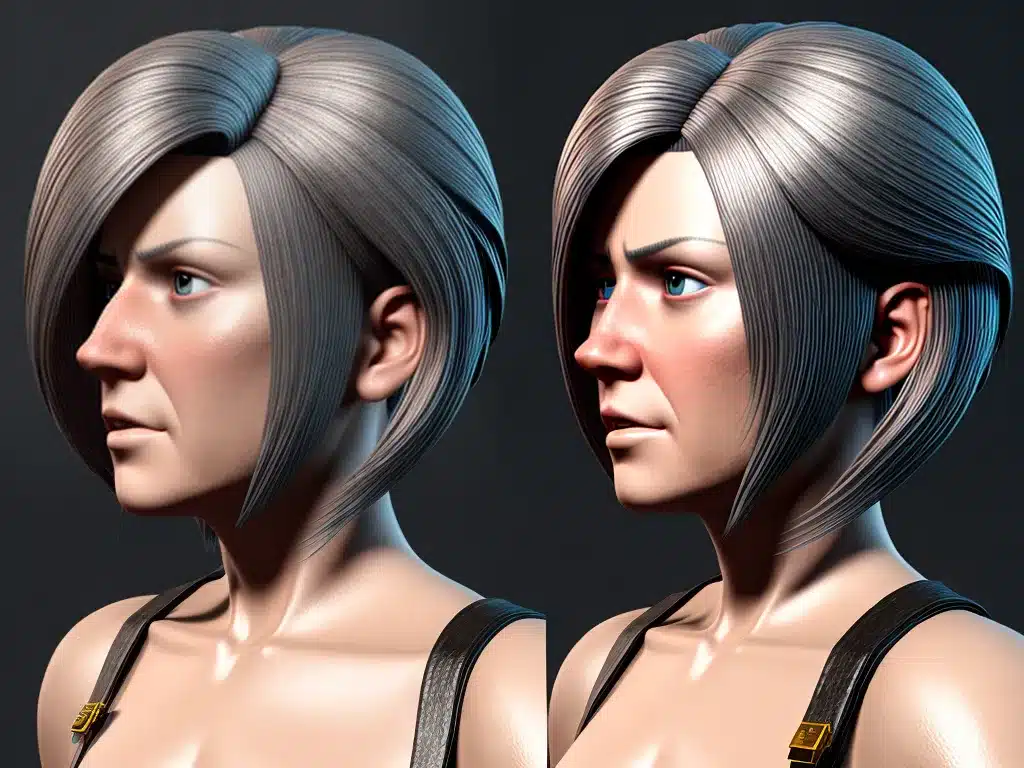
Introduction
Hair simulation in computer-generated imagery (CGI) has come a long way in recent years. Realistic hair motion and dynamics are crucial for bringing CGI characters to life, especially in high-budget films where viewers expect seamless and believable visual effects. In this article, I will provide an in-depth look at the advances in hair simulation technology and how these innovations have elevated CGI hair in Hollywood blockbusters and animated features.
Brief History of Hair Simulation
In the early days of CGI, hair was depicted using simple textures or static models. But as computing power improved in the 1990s, animators began to implement physics-based hair simulation. Pixar’s Geri’s Game short in 1997 demonstrated some of the first realistic hair motion achieved through simulation. In the 2000s, major strides were made in hair modeling, lighting, and animation for films like Shrek, Monsters Inc, and the Lord of the Rings trilogy.
But simulating every strand of hair was still unfeasible until the late 2000s. The development of guide strand techniques finally made it possible. Guide strands guide the overall motion and dynamics of hair clusters, reducing computational load. This breakthrough opened the floodgates for modern hair simulation.
Major Innovations
Here are some of the most important innovations that have led to incredible realism and dynamism in modern CGI hair:
Detailed Hair Models
-
Detailed geometric hair models with hundreds of thousands of individual strands are now commonplace. Disney’s Rapunzel in Tangled (2010) featured over 140,000 intricately modeled hairs.
-
The shape, curliness, thickness variation, and kink of each strand can be precisely controlled. This allows animators to mimic different hair types and styles.
Advanced Dynamics
-
Physics engines precisely simulate the bouncing, blowing, and motion of hair as characters move. Real-world parameters like gravity, friction, mass distribution and collisions are modeled.
-
Hair-hair interactions and strand grouping methods allow hairs to clump together realistically.
-
Environmental forces like wind and air resistance result in natural, non-uniform movement.
Reacting to Stimuli
-
Hair now dynamically reacts to both direct and ambient stimuli. This includes things like:
-
Head/body movements
-
Touching, brushing and grasping of hair
-
Wind force and direction
-
Motion of clothing and other objects
-
Blow drying, water, etc
-
The timing and motion of this simulated interaction between hair and its environment lends incredible realism.
Hair Shading
-
Advanced lighting, shading and rendering techniques now capture the complexity of hair material properties.
-
Sophisticated models simulate light scattering, reflection, refraction and absorption for realistic highlights, glow and transparency.
-
Multi-layered shaders approximate the fuzzy cuticle structure.
-
Effects like clumping, breakage, wetness, dirt and oil are possible.
-
The combination of complex shading with intricate hair dynamics results in hair that looks and moves like the real thing.
Case Study: Frozen 2
Disney’s 2019 animated feature Frozen 2 demonstrates state-of-the-art hair simulation. Here are some examples:
- Elsa’s long, thick braid showcases complex natural motion and collision.
- Snowflakes in Elsa’s hair react dynamically to her movements.
- Anna’s wispy flyaway strands blow around in the wind.
- Bruni the salamander’s sticky flaming “hair” is unlike any real phenomenon, enabled by advanced simulation tools.
This hair required major computing resources – over 100 million simulation hours for the film!
The Future
Current film hair simulation is astonishingly lifelike. But there are always opportunities for more enhancements:
-
Faster performance – Reducing simulation times through AI/ML will facilitate greater complexity and spontaneity in CGI hair motion.
-
Extended environments – Effects like wetness, dirt, and oil are still challenging to simulate at large scale across lengths of hair.
-
Automation – Procedural tools could empower artists to quickly set up hair simulations with less manual effort.
As computing power grows exponentially, we can expect CGI hair in films to become virtually indistinguishable from the real thing. Hair simulation will be limited only by the imagination of talented VFX artists.
Conclusion
In summary, hair simulation in CGI has rapidly evolved from basic texturing to highly advanced physics-based systems. Techniques like guide strands, detailed models, natural dynamics, reactive motion, and advanced shading all combine to achieve incredible realism. Blockbusters like Frozen 2 demonstrate the visual heights this technology has reached. With future optimizations like AI and automation, CGI hair promises to get even more lifelike in the years to come. The virtual characters of tomorrow may have hair that is just as natural and compelling as the best human performers.












